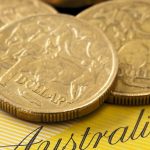 Yesterday’s trade saw GBP/USD within the range of 1.4743-1.4947. The pair closed at 1.4877, rising 1.15% compared to Wednesdays close. It has been the 128th gain in the past 279 trading days. However, the major pair has lost 5.33% of its value so far in June, following a 0.92% drop in the prior month.
Yesterday’s trade saw GBP/USD within the range of 1.4743-1.4947. The pair closed at 1.4877, rising 1.15% compared to Wednesdays close. It has been the 128th gain in the past 279 trading days. However, the major pair has lost 5.33% of its value so far in June, following a 0.92% drop in the prior month.
At 6:44 GMT today GBP/USD was losing 7.78% on the day to trade at 1.3720. The pair touched a daily high at 1.5018 during the early phase of the Asian trading session, or the highest level since December 16th 2015, and a daily low at 1.3231 during late Asian trade.
On Friday GBP/USD trading may be influenced by the following macroeconomic reports and other events as listed below.
Fundamentals
United Kingdom
EU membership referendum outcome
The sterling crumbled to lows unseen since the September 1985 Plaza Accord during Fridays Asian trading session, as the UK voted in favor of leaving the European Union. At one point GBP/USD was losing over 10% of its value, while plummeting to 1.3231, after it became clear that 51.9% of the British voters (17 410 742 people) supported Brexit, while 48.1% (16 141 241 respondents) voted for the current status quo. The surprising outcome triggered a massive transition to safe-haven assets such as the Yen, the US Dollar and Gold, as concerns of further discontent within the Euro bloc were raised. The common currency also depreciated sharply against its major peers, because of fears that Brexit could lead to anti-establishment movements in other European Union Member-States.
“The markets are in a panic after optimistic swings yesterday. People are selling the pound and anything that is close to it while buying assets that are remotely related to the pound as possible, such as U.S. Treasuries and the yen,” Ayako Sera, market economist at Sumitomo Mitsui Trust Bank, said, cited by Reuters.
BBA Home Loans
The number of home loans in the United Kingdom, issued by the British Bankers’ Association (BBA), probably decreased to 37 900 in May, according to market expectations, from the unrevised 40 104 in April. If expectations were met, this would be the lowest number of loans since February 2015, when a revised up level of 37 500 was reported (37 300 previously). The BBA features the major banks in the country, which account for almost 60% of overall mortgage lending. The number of mortgage loans is considered as a leading indicator in regard to UK housing market conditions. As growth in mortgage lending signifies a healthy housing sector, which also contributes to overall economic activity, in case the number of loans dropped more than projected, this would have a moderate bearish effect on the Sterling. The BBA is to publish the official figure at 8:30 GMT.
United States
Durable Goods Orders
The value of durable goods orders in the United States probably decreased 0.5% in May from a month ago, according to the median forecast by experts, following an unrevised 3.4% surge in April, or the largest one since January.
The value of shipments of manufactured durable goods, up for the first time in three months, rose 0.6% (or USD 1.5 billion) in April to reach USD 232.5 billion. The value of unfilled orders for manufactured durable goods, up in three out of the past four months, went up 0.6% (or USD 6.3 billion) in April to reach USD 1,137.0 billion. At the same time, the value of inventories of manufactured durable goods, down in nine out of the past ten months, shrank 0.2% (or USD 0.7 billion) during the period to USD 384.4 billion, according to data by the US Census Bureau.
Non-defense new orders for capital goods increased 7.8% (or USD 5.4 billion) in April to USD 73.6 billion, while defense new orders for capital goods expanded 3.7% (or USD 0.5 billion) during the month to USD 13.2 billion.
The value of durable goods orders, excluding transportation, probably rose 0.2% in May from a month ago, according to expectations, following a revised up 0.5% surge in April. The latter has been the largest monthly increase since January, when core orders were up at a revised down 1.2%.
In case the general index fell at a faster-than-projected pace, this would have a strong bearish effect on the US dollar, due to negative implications in regard to the wider gauge of production, factory orders. The US Census Bureau is scheduled to release the official report at 12:30 GMT.
Reuters/Michigan Consumer Sentiment Index – final reading
The monthly survey by Thomson Reuters and the University of Michigan may show that consumer confidence in the United States was lower in June from a month ago. The final reading of the corresponding index, which usually comes out two weeks after the preliminary data, probably came in at 94.0, down from a preliminary value of 94.3. In May the index stood at a final reading of 94.7, down from a preliminary value of 95.8. The survey encompasses about 500 respondents throughout the country. The index is comprised by two major components, a gauge of current conditions and a gauge of expectations. The current conditions index is based on the answers to two standard questions, while the index of expectations is based on three standard questions. All five questions have an equal weight in determining the value of the overall index.
According to preliminary data, the sub-index of current economic conditions, which measures US consumers’ views of their personal finances, went up to 111.7 in June, or the highest level in nearly 11 years, from a final reading of 109.9 in May. The sub-index of consumer expectations decelerated to a flash reading of 83.2 in June from a final value of 84.9 in May.
Respondents in the June survey expect that the rate of inflation during the next year will probably be at 2.4%, or matching the rate expected in the May survey.
In case the final value of the June consumer sentiment index outpaced the median forecast by analysts, this would have a moderate bullish effect on the US dollar. The final reading is due out at 14:00 GMT.
Bond Yield Spread
The yield on UK 2-year government bonds went as high as 0.555% on June 23rd, or the highest level since April 29th (0.557%), after which it closed at 0.533% to gain 3.5 basis points (0.035 percentage point) compared to June 22nd.
The yield on US 2-year government bonds climbed as high as 0.799% on June 23rd, or the highest level since June 7th (0.807%), after which it fell to 0.749% at the close to add (0.002 percentage point) compared to June 22nd.
The spread between 2-year UK and 2-year US bond yields, which reflects the flow of funds in a short term, shrank to 0.216% on June 23rd from 0.249% on June 22nd. The June 23rd spread has been the lowest one so far this year.
Daily, Weekly and Monthly Pivot Levels
By employing the Camarilla calculation method, the daily pivot levels for GBP/USD are presented as follows:
R1 – 1.4896
R2 – 1.4914
R3 (range resistance) – 1.4933
R4 (range breakout) – 1.4989
S1 – 1.4858
S2 – 1.4840
S3 (range support) – 1.4821
S4 (range breakout) – 1.4765
By using the traditional method of calculation, the weekly pivot levels for GBP/USD are presented as follows:
Central Pivot Point – 1.4252
R1 – 1.4494
R2 – 1.4630
R3 – 1.4872
S1 – 1.4116
S2 – 1.3874
S3 – 1.3738
In monthly terms, for GBP/USD we have the following pivots:
Central Pivot Point – 1.4526
R1 – 1.4722
R2 – 1.4966
R3 – 1.5162
S1 – 1.4282
S2 – 1.4086
S3 – 1.3842





